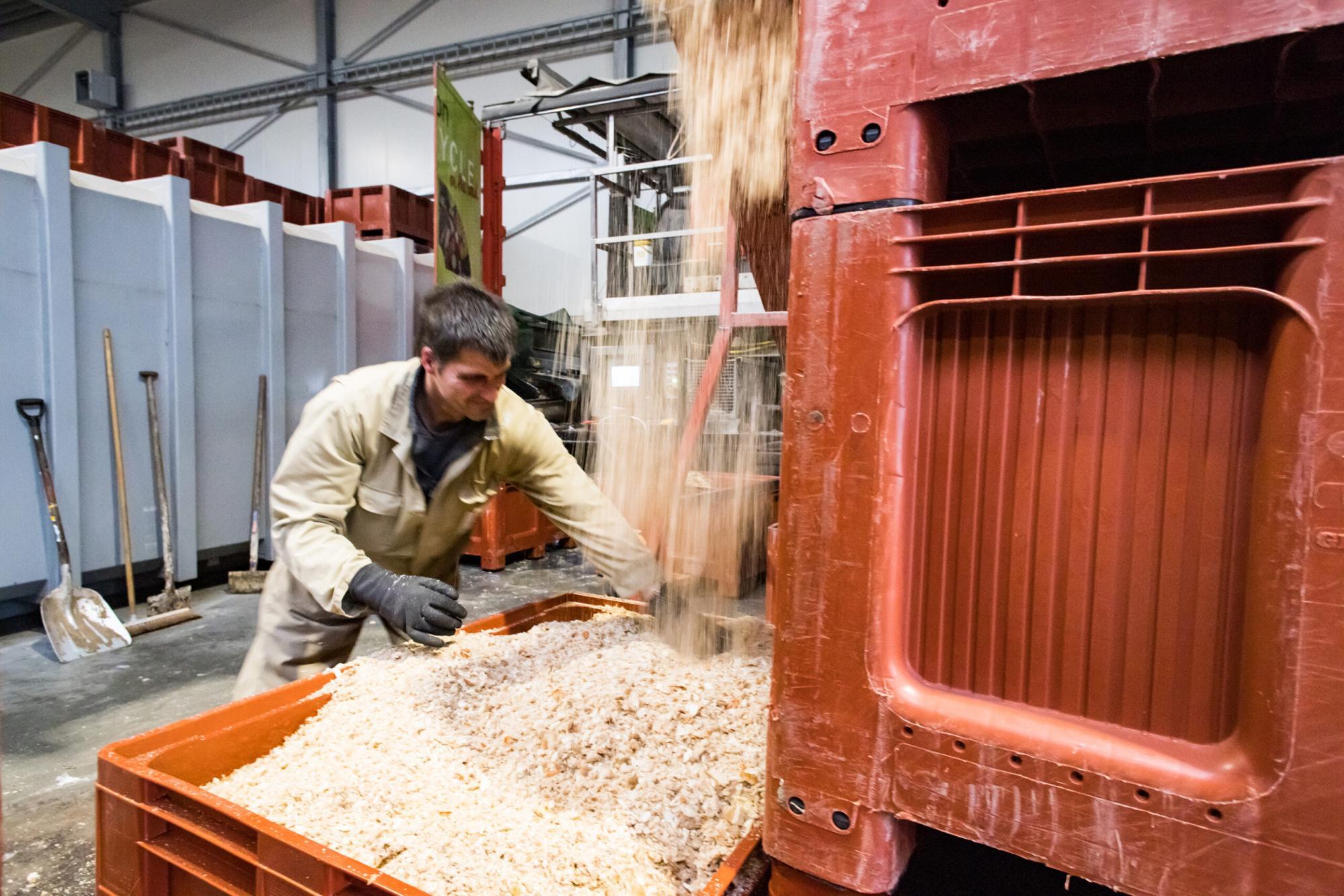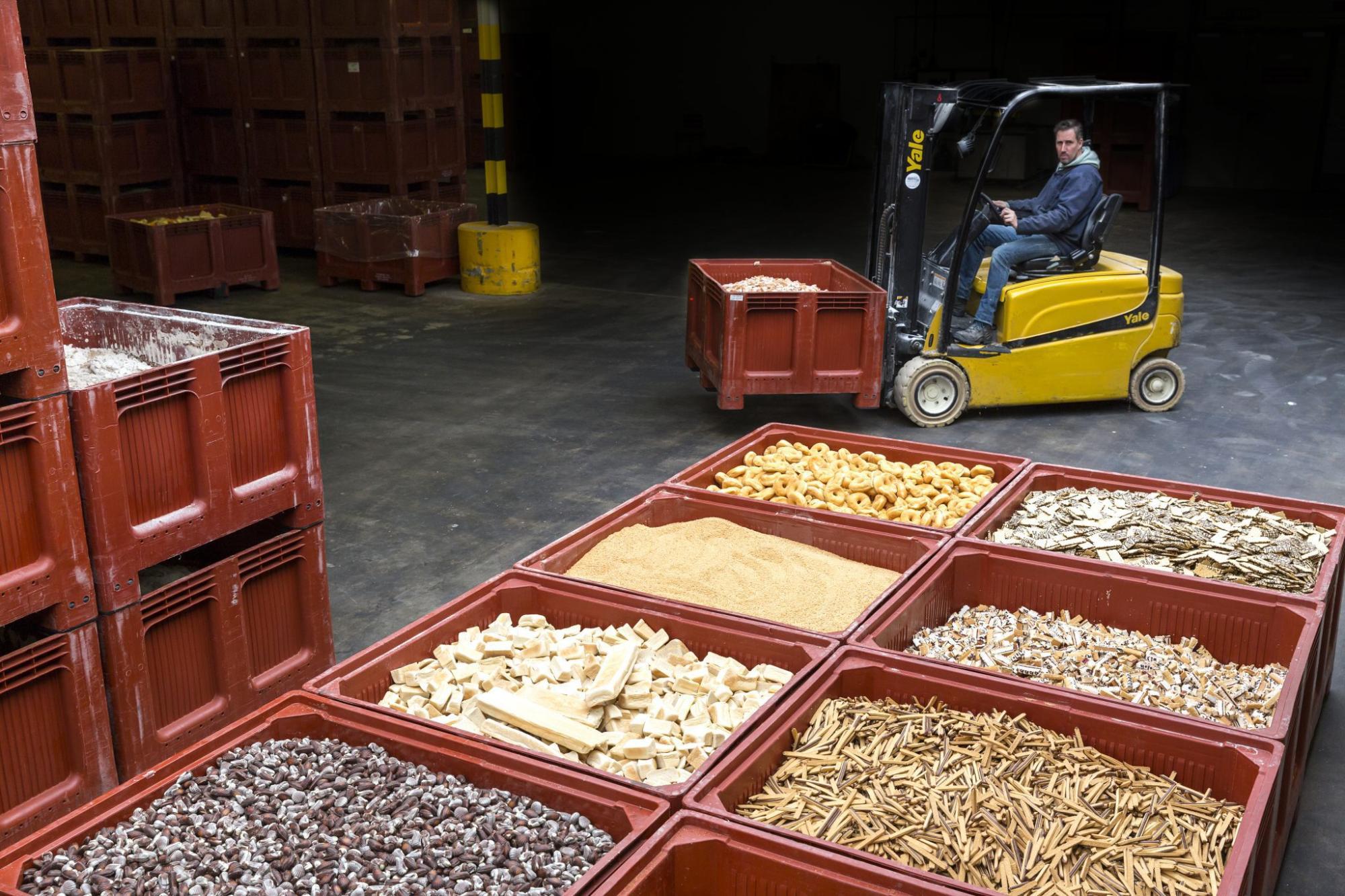About Nijsen
Nijsen, a family business located in Veulen near Venray, has developed a unique approach as the only compound feed manufacturer in the Netherlands. Exactly 35 years ago, the company began processing former food products such as bread, cookies, candy and flan into circular (pig) feeds. These Food-For-Feed® raw materials contribute to both sustainability and profitability for all parties in the chain. Every year, Nijsen returns over 100,000 tons of foodstuffs to the food cycle as high-quality pig or Kipster chicken feed. This contributes to circular agriculture and a more sustainable pig and poultry industry.
"We keep food, food. In doing so, we prevent food waste and provide a circular interpretation of the protein transition."
Farmer's son
Karel van der Velden has worked at Nijsen since 1986 and has a long history with the company. "As a farmer's son, I came straight from the HAS," he says. "Over the years, I grew from account manager to head of sales and business developer. In that position, I focus on product development and policy making, with an emphasis on the role of animals in the food system. Our mission is to use as many residual streams as possible and waste as little food as possible. Nijsen is a wonderful company with a lot of potential. We don't need to be the biggest, but we do need to be the smartest by doing the right things."
Circular animal feeds
Nijsen Company is pioneering circularity by using waste streams from the food industry in animal feed. "We preserve residual streams within the food system," says Karel. "We keep food, food. In doing so, we prevent food waste and provide a circular interpretation of the protein transition."
The company began using residual streams early on. "In 1989, we were offered leftovers from a pastry shop. The words sustainability and circularity didn't exist then. We saw the nutritional value and started experimenting," Karel explains. It was a challenge, but after years of trial and error, we managed to build a business around it. "Over the years, we have perfected this process to where we are today."

Crucial collaborations
Karel stresses the importance of working with various partners. "We work closely with machine builders and our customers, the farmers," he says. A lot of testing takes place on the farm to see how the animals react to the feed. "We also work with research institutes and trainees from training institutes to explore and develop new possibilities. That's how we keep moving forward. In recent years, the focus has been more on data management and AI, and how we can build on this."

Sustainable ambitions
Nijsen has ambitious plans for the future. They aim to produce the most sustainable feed in the world and want to build a digester to replace fossil energy with their own gas supply. In addition, Nijsen wants to open up new residual streams that are not currently allowed due to laws and regulations. "We are constantly looking for new residual streams and ways to minimize the impact of the food system on the environment," Karel said.
"Take advantage of the ecosystem we have in Limburg"
Leverage the ecosystem
Karel encourages other companies not to be too modest. "Make use of the ecosystem we have in Limburg. Have your idea explored by students or through an assignment at institutions such as HAS. They can offer new insights. Dare to ask your question. You will be surprised how much help and support you can find in networks like LIOF."
More to know about Nijsen?